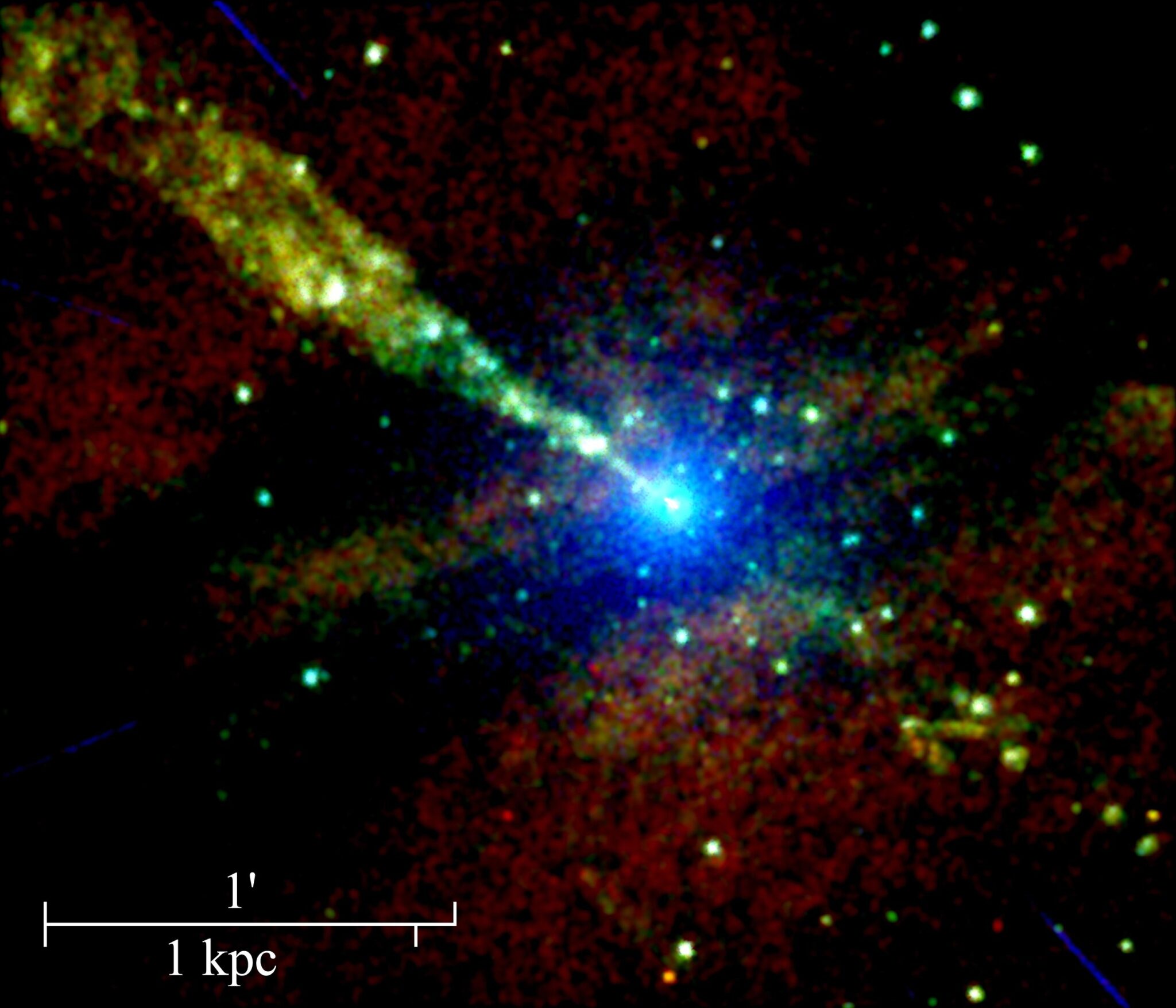Researchers have found that particles that burst out of a supermassive black hole move at nearly the speed of light, which is faster than all previous observations. Usually black holes are studied using radio telescopes, but this time a team of scientists used NASA’s Chandra X-ray observatory, which provided new data.

University of Michigan doctoral student David Bogensberger, lead author of the study, said the new approach to studying black holes opened up new opportunities. Black holes, once thought to be only a hypothesis, are now recognized by scientists and can even be photographed with synchronized radio antennas. Such supermassive objects, whose mass is millions or billions of times greater than the Sun, are hidden in the centers of large galaxies.
Scientists know that any body that falls into a black hole will inevitably die. At the same time, there is an accretion disk around the black hole — a ring of matter that rotates rapidly and, under certain conditions, can eject particles in the form of jets. These jets, known for their radio emission, also have bright X-rays, a feature that interested Bogensberger’s team.
Focusing on the black hole at the center of the Centaurus A galaxy, which is 12 million light-years away from Earth, scientists analyzed data collected by Chandra from 2000 to 2022. Bogensberger developed an algorithm to track bright clumps of particles, or so-called nodes, in jets. One such node was moving at 94% of the speed of light — much faster than observed in radio waves, where particle speeds were as high as 80%.
The study found that the fastest nodes are not near the black hole itself, but closer to the middle of the jet. Although a precise explanation for these phenomena is not yet available, Bogensberger plans to use the new method to study jets and other black holes to understand how different bands of radiation indicate different parts of the black hole’s environment.
The study is published in The Astrophysical Journal, and, as Bogensberger notes, his method may be key to new discoveries in understanding the nature of black hole’s jets.
We previously reported on how supermassive black holes in the early Universe were giant “hungry monsters”.
Provided by scitechdaily.com


